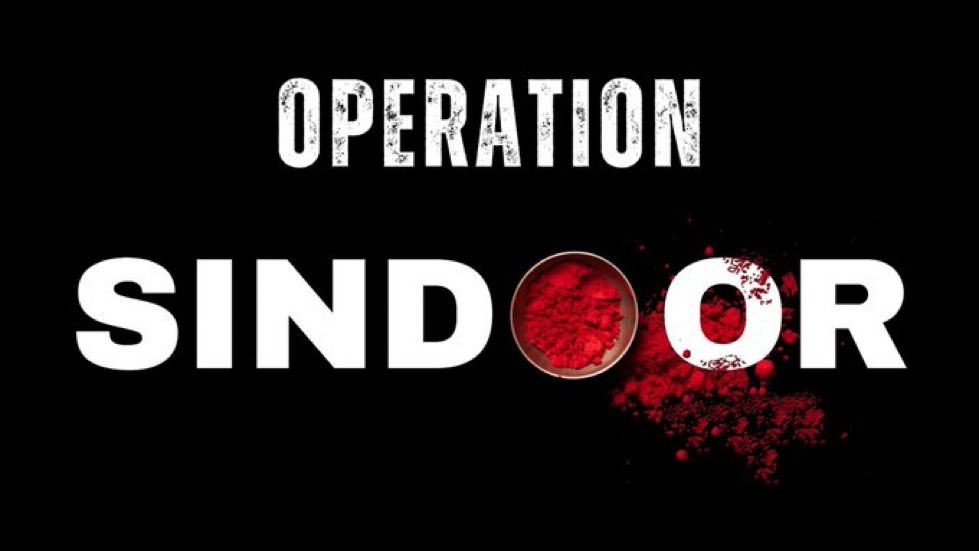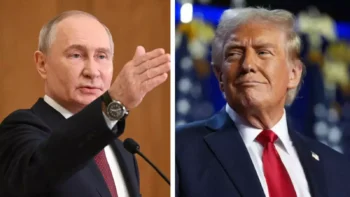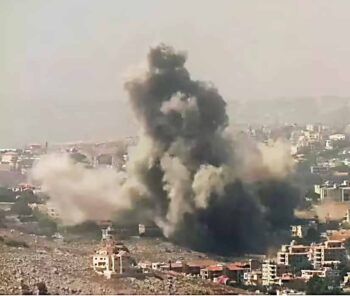Operation Sindoor and the Changing Face of Warfare: A Strategic Analysis

New Delhi, India achieved a decisive military victory in Operation Sindoor achieving all its tactical, strategic and political aims. Indian defence forces executed a near perfect offensive and defensive operations against a capable military adversary, while aligning with the overall objective of managing unwanted escalation. Starting from 0100 hrs on 07 May to announcement of ceasefire at 1700 hrs on10 May, this almost 90 hrs war has thrown many important military and strategic lessons.
The nature of warfare has undergone a transformative shift, marked by technological evolution, minimal troop deployment, and heavy reliance on precision-strike capabilities. With a decisive first strike involving stand-off missile attacks and loitering drones, and the subsequent exclusive use of unmanned and long-range weaponry, the operation showcased a modern form of combat that differs completely from traditional warfare.
The absence of significant infantry engagement, limited use of fighter aircraft, and a strong dependence on AI and media management raise fundamental questions: Has the concept of warfare changed irrevocably?
The Nature of the First Strike: Precision, Distance, and Surprise
India’s opening salvo in Operation Sindoor was marked by strategic ingenuity and technological sophistication. Between 0104 hrs to 0130 hrs on 07 May 2025, India launched a coordinated strike deep into Pakistan, focused on dismantling terror infrastructure by targeting terrorist bases acquired through hard and reliable intelligence.
Shri Vikram Misri, Foreign Secretary of India in his press briefing said the operations were ‘measured, non-escalatory, proportionate and responsible’. Air-launched strike included strike package of Rafale, Mirage 2000 and Sukhoi 30 Mk1 supported by Airborne Warning and Control System (AWACS) from aircraft operating well within IB and Line of Control. Ground-launched offensive included loitering munitions (Kamikaze Drones) and long range Arty fire by Army.
Seven closer targets were taken by Army and two farther targets including Bhawalpur and Muridke in Pakistan Punjab were taken on by Airforce. The offensive was duly supported by defensive actions ie integrated counter Unmanned Aircraft System (Counter UAS Grid/ Anti drone systems), Air Defence system and no gap LC deployment. This simultaneous use of stand-off and loitering weapons demonstrated several key shifts in combat doctrine:
- Precision over mass: Rather than overwhelming enemy defenses with sheer numbers, precision-guided munitions achieved strategic objectives with minimal collateral damage.
- Stand-off tactics: The deliberate decision to launch from a safe distance ensured the survivability of platforms and highlighted a doctrinal shift towards risk-averse engagements.
- Loitering drones as force multipliers: These platforms provided real-time surveillance, target acquisition, and kinetic capabilities, enabling dynamic battlefield decision-making.
This blend of tactical surprise and technological superiority neutralised many terrorist bases including eliminating 70 to 100 terrorists. This also proved effective in neutralizing key Pakistani radar, command, and missile facilities within the first 12 hours.
Pakistan’s Response and Escalation Dynamics
In response, Pakistan launched a counteroffensive on night 07-08 May, attempting to engage about 15 locations in Northern and Western India using a combination of cruise missiles and suicide drones. It also intensified Artillery shelling in J&K in an attempt to infiltrate terrorists and counter Indian shelling. However, the absence of manned aircraft and reliance solely on unmanned platforms signalled caution, shaped by both strategic calculation and fear of further escalation.
Pakistan’s missile response was largely intercepted by India’s layered air defense system, with platforms like S-400, Akash, and indigenous laser-based anti-drone systems proving highly effective. Counter-drone operations saw extensive jamming and swarm neutralization efforts, underlining the growing role of electromagnetic and cyber warfare. This phase of the operation highlighted a new form of escalation restraint, shaped by nuclear thresholds and technological parity.
The Diminished Role of Traditional Forces
A striking feature of Operation Sindoor was the minimal involvement of traditional military platforms. Limited use of fighter aircraft and helicopters was confined to the first 24 hours, primarily for battle damage assessment and rapid response missions. Probably, both side did not fly any fighter aircrafts after the first night. Concept of Air superiority and air supremacy looked like an old concept. Ground force deployment was limited to forward troop alerts and defensive posturing.
There was no major infantry advance across the border, indicating a strategic preference for containment and deterrence over territorial capture. This de-escalated posture not only reduced human casualties but also signalled to the international community, India’s intent to manage the conflict within controlled parameters.
The Role of Air Defense and Anti-Drone Systems
India’s air defense network played a pivotal role in the outcome of Operation Sindoor. The layered system combined long-range, medium-range, and short-range systems, creating a near-impenetrable shield. Effectiveness of Indian air defense systems exceeded expectations, with over 90% interception rates for incoming cruise missiles.
Anti-drone systems, including swarming neutralization platforms and directed-energy weapons, effectively neutralized over 150 hostile drones. Integration with AI and real-time C4ISR (Command, Control, Communications, Computers, Intelligence, Surveillance, and Reconnaissance) provided rapid target acquisition and interception within seconds. This demonstrated that in future conflicts, survivability will increasingly depend on advanced sensors, data fusion, and automation rather than sheer firepower.
Use of Artificial Intelligence and Media Strategy
Artificial Intelligence (AI) played a decisive role in both kinetic and non-kinetic dimensions of the conflict. Targeting decisions were accelerated using AI-based predictive analytics, reducing sensor-to-shooter cycles. Drone swarms and loitering munitions were AI-assisted in navigation and dynamic target acquisition, allowing them to bypass electronic jamming. Information warfare was waged with equal intensity. India leveraged AI to monitor social media narratives, deploy deepfake detection systems, and control disinformation.
Moreover, India’s media strategy was proactive and transparent. Daily briefings with satellite imagery, AI-verified battle damage assessments, and real-time updates kept both domestic and international audiences informed, garnering diplomatic support and narrative dominance. Mr Vikram Misri and two lady officers giving media briefs was a masterstroke in Perception management. Some prominent Indian news channels, YouTube channels, news websites and print media were responsible for forming national and international opinion on the need and success of the operation and instilling a feeling of patriotism.
The Nuclear Threshold and Strategic Deterrence
A crucial underlying factor in Operation Sindoor was the shadow of nuclear deterrence. Both India and Pakistan are nuclear-armed nations with declared policies of No First Use (India) and Full Spectrum Deterrence (Pakistan). Some of the key observations included, neither side crossed the nuclear red lines, despite intense missile exchanges.
This restraint reflects the maturing strategic thought process of both nations. India’s limited, non-territorial strike maintained strategic ambiguity, sufficient to deter escalation but not provoke a nuclear response. Back-channel diplomacy, facilitated by third-party nations, operated alongside military engagements to ensure de-escalation.
The operation reinforced the idea, that modern warfare between nuclear-armed adversaries is likely to remain limited in scope and duration, conducted under the constant spectre of strategic deterrence. Most of defense experts believe that ‘Pak Nuclear Bluff’ is proved wrong for posterity, however truth is that, Nuclear power is a sure deterrence and the world knows it. Nations don’t cross the line and mediation is easy and swift.
Economics playing a Major Role
Despite challenging global conditions, India is currently ranked fifth largest global economy and remains the world’s fastest growing economy at a rapid clip of more than 7% every year. It aims for Vikshit Bharat 2047 and is working hard for it. In this journey, the deterrence’s will come but India needs to handle it maturely. Accordingly economics will play a major role in future warfare either in terms of sustaining the war or caution towards downfall in economy with prolonged wars. Pakistan was at a receiving end, with very poor economy which was not capable of sustaining long duration war. Accordingly it initiated peace talks early.
Outreach with Foreign Countries
The warfare these days cannot be fought in Isolation. Diplomacy and outreach to major as well as minor world powers and international community is a must. Immediately after the shameful terror strike at Pahalgam on Apr 22, 2025 where 25 innocent civilians were killed, India was keen to take revenge. Once Pakistan involvement was proved, a military action was a must against Pakistan. From Apr 22 to May 07, PM Mr Modi spoke to the heads of 14 Nations including USA, Russia, Australia, Japan and many West Asian countries.
Mr Jaishankar spoke to his counterparts of six nations and briefed UNSC. NSA Mr Doval briefed many of his counterparts post offensive, including the NSA and Sect of State of USA, Mr Marco Rubio. Overall a very positive International opinion was formed. Most countries supported India’s ‘Zero tolerance’ policy towards terrorism and its point of view. Pakistan felt deeply isolated and under a lot of international pressure. It was banking of Muslim nations support but other than Turkiye, most countries stayed away from Pakistan.
Role of the US and Western Mediation
The global implications of Operation Sindoor ensured immediate international attention. The United States, European Union, and the United Nations were quick to call for restraint and de-escalation. The US, in particular, played a leading role in mediating between the two countries. Back-channel negotiations, reportedly facilitated through Saudi Arabia, Qatar and Switzerland, led to an informal ceasefire within 96 hours. Western diplomatic pressure, driven by fears of nuclear escalation and regional instability, forced both nations to maintain open communication lines. Operation Sindoor hence becomes a case study in modern conflict management where diplomacy, media narratives, and technological deterrence intersect.
Conclusion- Has Warfare Fundamentally Changed?
Operation Sindoor offers a compelling argument that the nature of warfare has indeed evolved. From trench warfare in First World War, Tanks and Anti-tank battle in Second World War, Airpower in the Cold war period to Missile, Anti-missile and Drones in current times, the characteristics of this conflict underscore several fundamental changes:
- Primacy of unmanned systems: Drones and precision missiles now dominate the battlefield, reducing the need for large-scale troop deployments.
- AI as a strategic force multiplier: From targeting to narrative control, AI’s role in warfare is now central, not peripheral.
- Air defense and cyberwarfare as front-line tools: Traditional air superiority is now challenged by superior defense and electromagnetic dominance.
- Information and perception management: Warfare now includes controlling the narrative as much as the battlefield.
- International Opinion: Positive international opinion and diplomacy will play a crucial role.
- Short, sharp conflicts under nuclear deterrence: Full-scale wars are being replaced by limited-duration, high-intensity engagements with precise objectives and global oversight.
Col Dr Rakesh Kumar Registrar, PDEU




